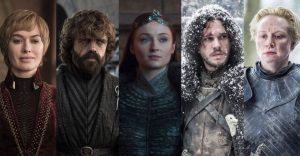The Flash: 9 Best Comic Issues of the 2010s

The Flash grew in popularity in the 2010s with the titular CW series and his cinematic debut in the DC Extended Universe with the release of Zach Snyder’s Batman v Superman: Dawn of Justice. But the previous decade also saw an evolution in the character’s comic book run, thanks to reboots like The New 52 and Rebirth and revamps hos some of the character’s most popular villains like Captain Cold.
Featuring mostly Barry Allen’s version of the scarlet speedster, these comics were a result of the event dubbed as The Flashpoint Paradox. With Flashpoint, the superhero didn’t only change his future in the comics but also the rest of the DC Universe. Hence, it is not surprising to find the Flash appearing in some memorable comics from this period.
9 Flash War (Vol. 5 #45-50)

Wally West returns in Flash War to find his children in the Speed Force. Unsure about their fate, he wishes to intervene and change the timeline altogether. Barry Allen has had enough disastrous experiences with time travel to know that this can be a bad move. What follows is an ideological and physical clash between the two speedsters.
In previous storylines, the multiple powerful versions of the Flash have had conflicts with each other over the use of their powers and the manipulation of speed. Similarly, Wally is driven by emotion while Barry becomes the rational one in this case. Both heroes are morally correct in their own right and this is what makes their ‘war’ all the more exciting.
8 Flashpoint (Crossover)

As Barry Allen runs back in time to save his mother, he does not realize that he has changed the fate of his universe forever. Through the event dubbed as Flashpoint, Barry set in motion massive changes in the timeline. As a result of this, New Earth was replaced by Prime Earth.
This Prime Earth continuity served as an impetus to reboot the entirety of DC Comics under The New 52 imprint. Hence, Flashpoint‘s impact on the DC Multiverse can be felt from the fact that it was a watershed moment in its existence. The angle of Flash preventing his mother’s death also formed a major plot point in the initial seasons of the CW series.
7 Move Forward (The Flash Vol. 4 #1–8)

Move Forward establishes Barry Allen’s life following the events of Flashpoint. Now, it has only been five years since he got struck by lightning and became the Flash. Even his love life has been changed with Patty Spivot being his romantic partner instead of Iris West. The comic also marked the debut of the clone army Mob Rule that serves as the comic’s primary antagonist.
Marking the start of the New 52 version of The Flash, this storyline serves as an exciting, new take on Barry Allen’s character. If anything, it also shows the immense changes that a speedster can go through after an occurrence like Flashpoint.
6 Lightning Strikes Twice (The Flash Vol. 5 #1–8)

As the Speed Force is unleashed on other inhabitants of Central City, new speedsters within The Flash comic universe rise. Barry Allen begins training such individuals to form his own team of responsible heroes with super speed. Meanwhile, Barry also introspects about his past to think about the origins of Flashpoint and how he changed history forever.
Despite the allusions to Flashpoint, Lightning Strikes Twice is an all-new storyline as it introduced the Rebirth era for the scarlet speedster. The 2016 relaunch introduced yet another version of Barry Allen as Wally West also returns. So, in just a matter of few years, readers got a glimpse of two different origin stories with The New 52 and Rebirth.
5 Year One (The Flash Vol. 5 #70–75)

As is evident from its title, Year One goes back to the very start to piece together Barry Allen’s past as the metahuman speedster. The storyline covers his everyday life as a forensics expert as well as the lightning strike that bestowed powers upon him.
The narrative plays out as a Flash origin story although its second half also touches upon Barry’s future as a costume-wearing superhero. Talking about costumes, Barry’s first few moments as the speedster focus on his human side and don’t even feature him in his iconic costume. Instead of being a full-fledged superhero and a brave Justice League member, this version of Allen is shown to be a vibrant young man who is only discovering the full capacity of his new powers.
4 Origin (Justice League Vol. 2 #1-6)

Rather than wasting time over their familiar backstories, this New 52 reboot focuses on a few particular moments that define each character. The Flash plays a major role in fighting against Darkseid’s forces as he is capable of outracing his Omega rays as well as his Parademon forces.
The plot is largely similar to Zack Snyder’s Justice League and would excite fans of the film for this reason. As Batman unites six other heroes to form a League against Darkseid, the Flash complies immediately, showing the character’s innate heroism and bravery. This version of Barry Allen is more mature and responsible and is willing to go against no matter who the threat is (even if it is an angry, brainwashed Superman).
3 Full Stop (The Flash Vol. 4 #48–52)

The tables have turned in the final volume of The Flash as the Rogues gain legal permission to pursue the Flash who has now become a wanted fugitive. The hero is on the run as a wanted fugitive ever since his last meeting with Zoom in the previous issue. While the Rogues are busy with their unexpected responsibilities, the Riddler wreaks havoc on Central City.
The role-reversal involving Flash and his adversaries is what makes Full Stop unique as a comic book arc. The Flash’s tussles with the law would also remind seasoned readers about iconic yesteryear comics such as The Trial of the Flash. As for one of Batman’s best comic book villains the Riddler, he gets his own moments to shine as he leaves Gotham City for new adventures.
2 Rogues Reloaded (The Flash Vol. 5 #14–20)

As Flash’s classic enemies the Rogues plan to retire and settle in a beachside mansion, peace seems to be restored in Central City. However, when the Rogues are themselves targeted by new villains, they unwillingly seek the help of the scarlet speedster.
Rogues Reloaded is a great opportunity to showcase the good side of the titular villains. After all, members such as Captain Cold, Heat Wave, and Captain Boomerang, never believe in killing or harming people for no reason. It’s for such reasons that the Flash shares a love-hate relationship with most of them as can be seen in this comic.
1 The Button (The Flash Vol. 5 #21-22)

The Button is a crossover storyline involving Batman and the Flash as they investigate the meaning behind a blood-stained smiley button in the Batcave. The object becomes a portal to a larger mystery that involves the real reason behind the Flashpoint Paradox.
Readers can already guess the Watchmen references with the titular button belonging to the Comedian along with Doctor Manhattan’s ominous dimension-hopping presence. The four-issue miniseries served as a prelude to the larger crossover known as Doomsday Clock. The Button also makes for a significant comic given how it marks the reappearance of Watchmen characters for the first time since the original graphic novel debuted.
About The Author


















